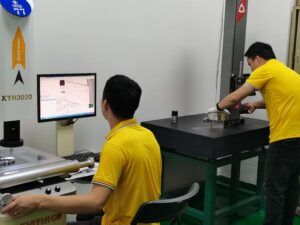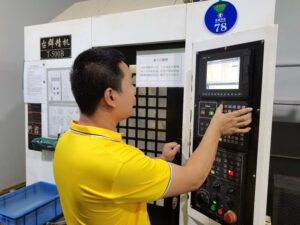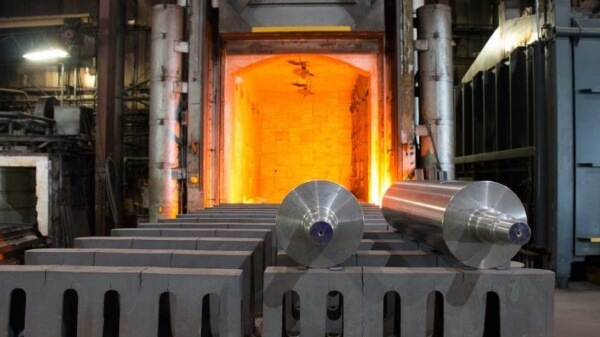Years ago, blacksmiths used heat to shape metal for things like carriage parts, horseshoes, and more. Once the desired shape was formed, the metal would cool rapidly. This would usually make the metal harder and less brittle. This is a fundamental process called heat treatment of metals. Modern machining and metalworking processes are now much more precise and sophisticated.
Many different techniques help shape metals for various purposes. The heat treatment process changes the way the metal reacts to precision machining. Heat treatment can change a variety of properties of a metal. These properties include hardness, strength, formability, elasticity, machinability, and more.
There are several methods of heat treatment available today. Metallurgists are constantly working to improve the cost efficiency and results of these methods. If followed properly, these methods can give you metals with extraordinary chemical and physical properties. Here, we will take a closer look at the types of heat treatments for steel and metals and their uses.
What is heat treatment?
Generally, heat treatment of steel involves the heating and cooling of the material. The metal or alloy is heated to a specific temperature. Then, cooling occurs to harden the heated material. The process is intended to change the microstructure of the metal. In addition, it helps to develop the desired mechanical, chemical, and physical properties.
The changes in these properties are beneficial to the working life of the components involved. For example, ductility, strength, surface hardness, or temperature resistance may be increased. Heat treatment is one of the essential parts of the metal manufacturing process. This is because it helps to improve the metal components to better withstand wear and tear.
The general definition of heat treatment may be the heating and cooling of metals. However, the heat treatment process is more controlled. When the heating and cooling processes are in place, the shape of the working metal remains unchanged.
During this process, the structural and physical properties of the material are changed to achieve the desired purpose. It can also be used for further metal processing. Heat treatment of steel or metal plays an important role in various manufacturing stages.
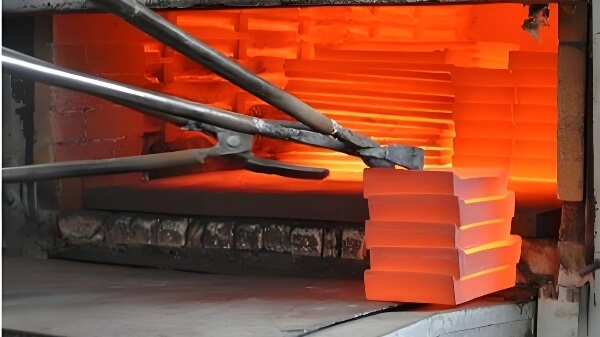
How does heat treating metals work?
Although there are many types of heat treatment, they all follow a similar process. The first step involves heating the metal or alloy to the desired temperature. Sometimes, the temperature rises as high as 2400°F. It is held at the specified temperature for a certain amount of time before cooling.
When metal is hot, the microstructure changes. This is the physical structure of the metal. The changes in the structure ultimately lead to changes in the metal’s physical properties. “Soak time” is the amount of time used to heat the metal. Soak time is an important factor in the heat treatment process. Metals that have been soaked for longer periods of time have more microstructural changes than metals that have been soaked for shorter periods of time. The cooling of the metal also plays a vital role in the final result.
The cooling process may be a rapid quench. In other cases, the cooling may be done slowly in a furnace. The best type of cooling depends on the desired end result of the process. Therefore, it is important to consider these factors before you begin heat treating steel and metals.
Another factor also determines which properties of the metal will change. This is the specific time of the heat treatment during the manufacturing process. Some metals may even need to be heated multiple times during the manufacturing process. Therefore, it is important to understand the best way to perform the operation correctly.
Benefits of Heat Treatment of Metals
If heat treatment of metals had not been done, there might not be such things as metal parts for equipment and devices. Even if they existed, they would not function in the right manner. For example, non-ferrous metal parts are too brittle for several applications.
Strengthening of metals and alloys, such as steel and aluminum plates, occurs through heat treatment. Many of these metals have applications in areas such as aircraft, automobiles, computers, etc. These products rely on metals with greatly improved strength. This is to ensure adequate safety and improved performance.
The main mechanical property that is altered after heat treatment is shear strength. Others include tensile strength and toughness. Heat treated metals are generally stronger, ensuring durability. Therefore, there is no need to replace expensive metal parts from time to time.
Using metal parts that have been effectively heat treated ensures that the machines will function efficiently and economically. Moreover, the efficiency of the product will be greatly improved, even for the most demanding applications. Moreover, some applications may require extremely hard metals. These applications may be those that require highly defined edges.
Heat treatment of metals is one of the best ways to obtain the desired properties. It also helps in developing a hard surface with a ductile substrate. Apart from the application benefits, heat treatment also has benefits for manufacturers.
A proper heat treatment process helps to eliminate internal stresses. Therefore, this makes the metal easier to weld or machine. Processes such as hot forming can create stresses in steel over time. Therefore, these materials greatly benefit from heat treatment. In a nutshell, the benefits of heat treating metals include:
Increases strength and makes the material ductile or more flexible.
It introduces wear-resistant properties to the metal.
Relieves stresses, making parts easier to machine or weld.
It improves brittleness.
Can improve the electromagnetic properties of metals.
Types of Heat Treatment and Their Uses in Processing
As mentioned earlier, every heat treatment process involves heating and cooling. In this section, we will discuss the four main types of heat treatment. You will also learn about their unique uses in processing.
Hardening
Hardening involves heating the metal material to a specific temperature. This temperature is the point at which the elements present in the metal go into solution. The metal may have defects in its lattice structure, and these defects are the source of plasticity. Heat treatment helps to resolve these defects.
It does this by bringing the metal into a fine particle solution. This helps strengthen the metal material. Once the metal is thoroughly heated to the desired temperature, it is quenched as quickly as possible. Quenching helps the metal capture particles in the solution. In some cases, technicians may add impurities to the alloy to further increase the strength.
The purpose of hardening is to increase the strength of the metal. At the same time, it makes the metal more brittle while reducing ductility. Therefore, tempering the metal after the hardening process can help.
Tempering
This is another heat treatment process that helps improve the elasticity of steel. Iron-based alloys are usually hard, but tend to be too brittle for certain applications. Tempering helps change the hardness, brittleness, and ductility of the metal. This is to make the machining process easier.

In this case, heating occurs at a temperature below the critical point. Lower temperatures tend to reduce brittleness and maintain hardness. Tempering helps reduce the hardness caused by hardening. In this way, you can develop new physical properties for your metal. Therefore, tempering should often be performed after quenching when heat treating.
Annealing
This process is applicable to metals such as steel, aluminum, copper, silver or brass. Annealing involves heating the metal to a specific temperature. Then, the metal is kept at this temperature for a period of time to transform. Afterwards, air cooling is performed.
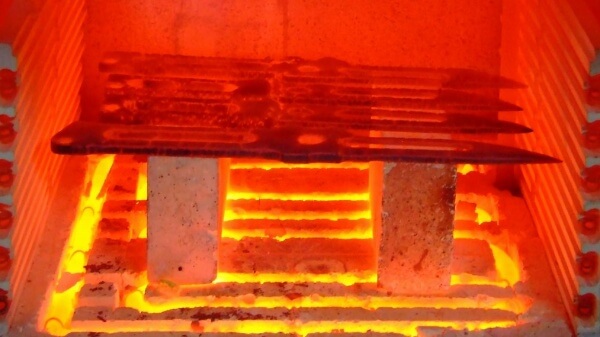
For silver, copper, and brass, cooling can occur slowly or quickly. However, for effective annealing, the cooling of the steel must be gradual. Annealing is the opposite of hardening. It reduces the hardness of the metal while increasing its ductility. Thus, it makes working on the metal easier. It is also a good way to fix weak metals. At the same time, it helps to relieve the internal stresses of the metal.
Normalizing
Normalizing is another form of annealing. In this case, the metal material is heated to 200°F, above the annealing temperature. Technicians keep the metal at the critical temperature until the transformation occurs. This heat treatment process requires air cooling after hea
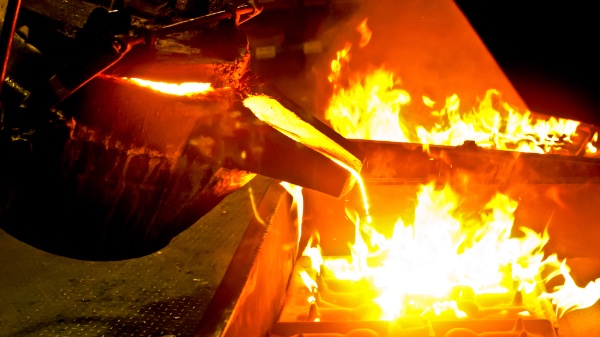
This process results in smaller austenite grains. Air cooling helps produce finer ferrite grains. It removes any form of internal stress in the metal. Internal stress can cause metal failure. Therefore, it is essential to normalize the metal. Then, hardening can ensure the success of the manufacturing process.
Conclusion
Heat treatment of metals is a great way to improve the mechanical properties of metals. In addition to physical, it can also improve the electromagnetic properties of metals. This further improves the compatibility of the part with other materials.
As you know, various heat treatment processes can help improve your products. However, you need the best hands to handle your project to get the expected results.



